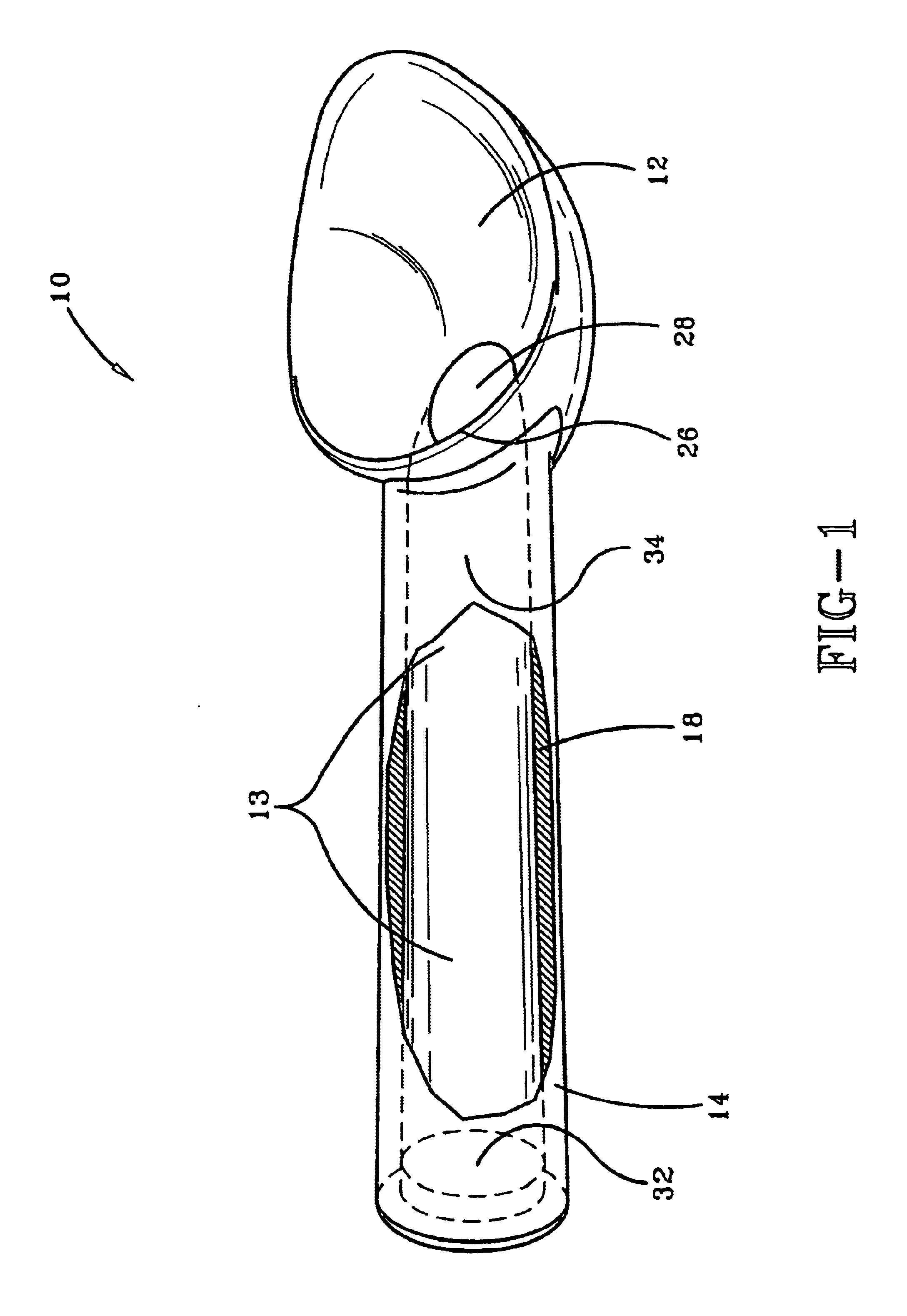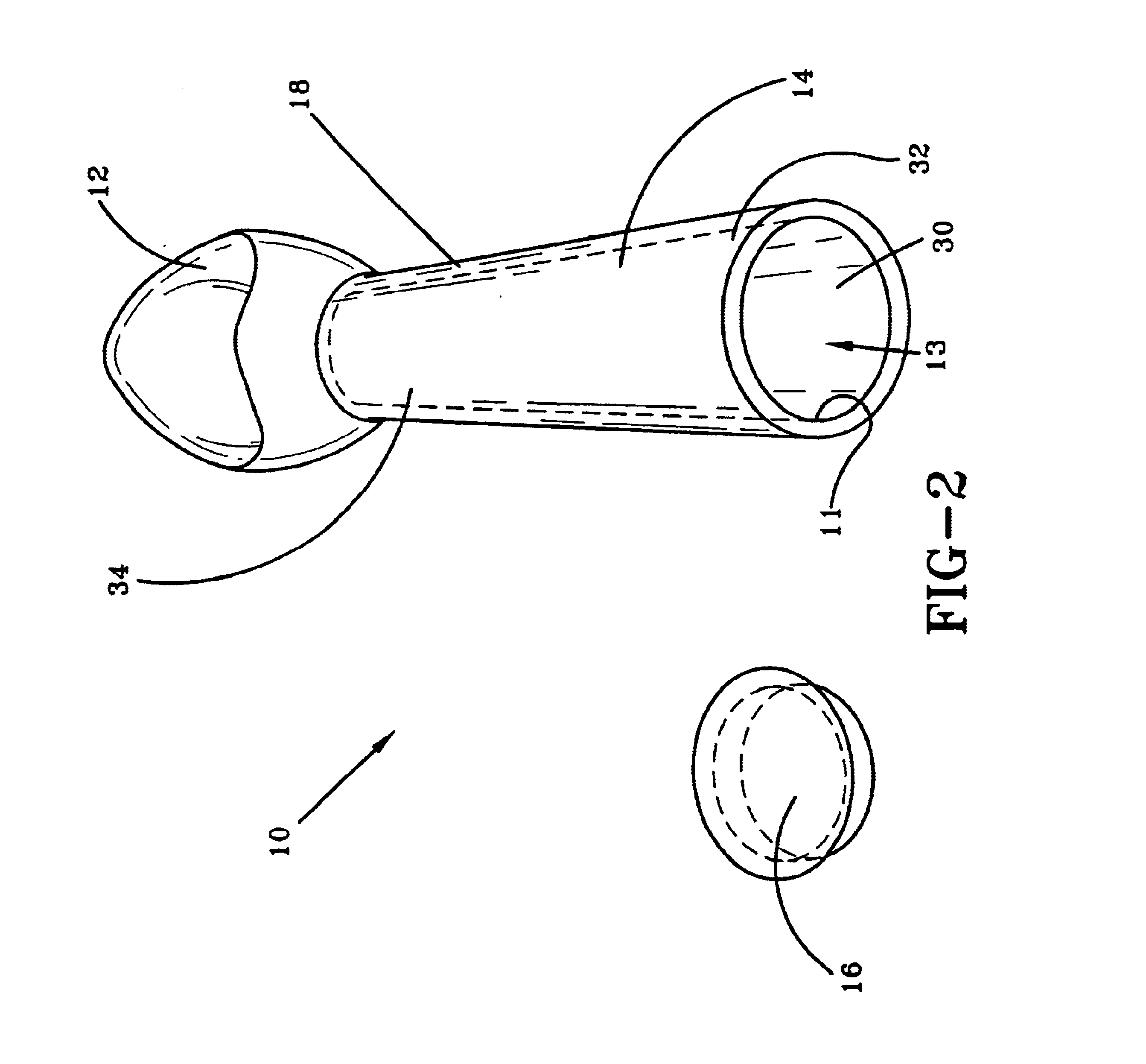Heat transfer ice cream scoop
a technology of ice cream scoops and ice cream, which is applied in the direction of ceramic shaping apparatuses, sweetmeats, manufacturing tools, etc., can solve the problems of significant force required to push the utensils, and unsatisfactory known methods for heating such utensils, so as to facilitate the removal of frozen products and maximize heat capacity and thermal conductivity of materials
- Summary
- Abstract
- Description
- Claims
- Application Information
AI Technical Summary
Benefits of technology
Problems solved by technology
Method used
Image
Examples
first embodiment
Referring now to the drawings wherein the showings are for purposes of illustrating a preferred embodiment of the invention only and not for purposes of limiting the same, FIGS. 1 and 2 show the present invention. A utensil 10 includes a scoop portion 12, that is preferably bowl shaped, and is adapted to scoop a frozen product from a frozen product container. The utensil 10 also includes a handle 14 having first and second ends 34, 32 respectively. The first end 34 may be connected to the scoop portion 12 as shown. Of course the handle 14 may be connected to the scoop portion 12 in any manner chosen with sound engineering judgment. The handle 14 preferably includes a hollow portion 11 thereby creating a fluid retention region 13 adapted to receive an associated fluid, such as water. This utensil may also include a cap 16 that is selectively connectable to the second end 32 of the handle and adapted to enclose the associated fluid within the fluid retention region 13 of the handle 14...
second embodiment
FIG. 3 along with FIGS. 1 and 2 show one version of the present invention. FIG. 3 shows a heat transfer member 20 consisting of a first end 22 and a second end 24. In the embodiment shown, the heat transfer member is heat pipe 20 but alternative heat transfer members are also possible as discussed further below. The heat pipe 20 is inserted into the handle 14 of the ice cream scoop 10 whereupon the first end 22 is further inserted into an aperture 28 at the base 26 of the scoop portion 12 to hold the heat pipe 20 in place during use. After the fluid retention region 13 is filled with hot or warm water, the cap 1 may be placed over the opening 30 at the end of the handle 14. However, it should be noted that a cap is not required. In other words, the fluid retention region 13 may be filled with fluid and then sealed. The heat transfer member 20 could still transfer heat from the fluid to the scoop portion 12. It should be noted that the heat pipe also removes heat from the handle 14 m...
PUM
| Property | Measurement | Unit |
|---|---|---|
| temperature | aaaaa | aaaaa |
| temperature | aaaaa | aaaaa |
| heat capacity | aaaaa | aaaaa |
Abstract
Description
Claims
Application Information
 Login to View More
Login to View More - R&D
- Intellectual Property
- Life Sciences
- Materials
- Tech Scout
- Unparalleled Data Quality
- Higher Quality Content
- 60% Fewer Hallucinations
Browse by: Latest US Patents, China's latest patents, Technical Efficacy Thesaurus, Application Domain, Technology Topic, Popular Technical Reports.
© 2025 PatSnap. All rights reserved.Legal|Privacy policy|Modern Slavery Act Transparency Statement|Sitemap|About US| Contact US: help@patsnap.com



